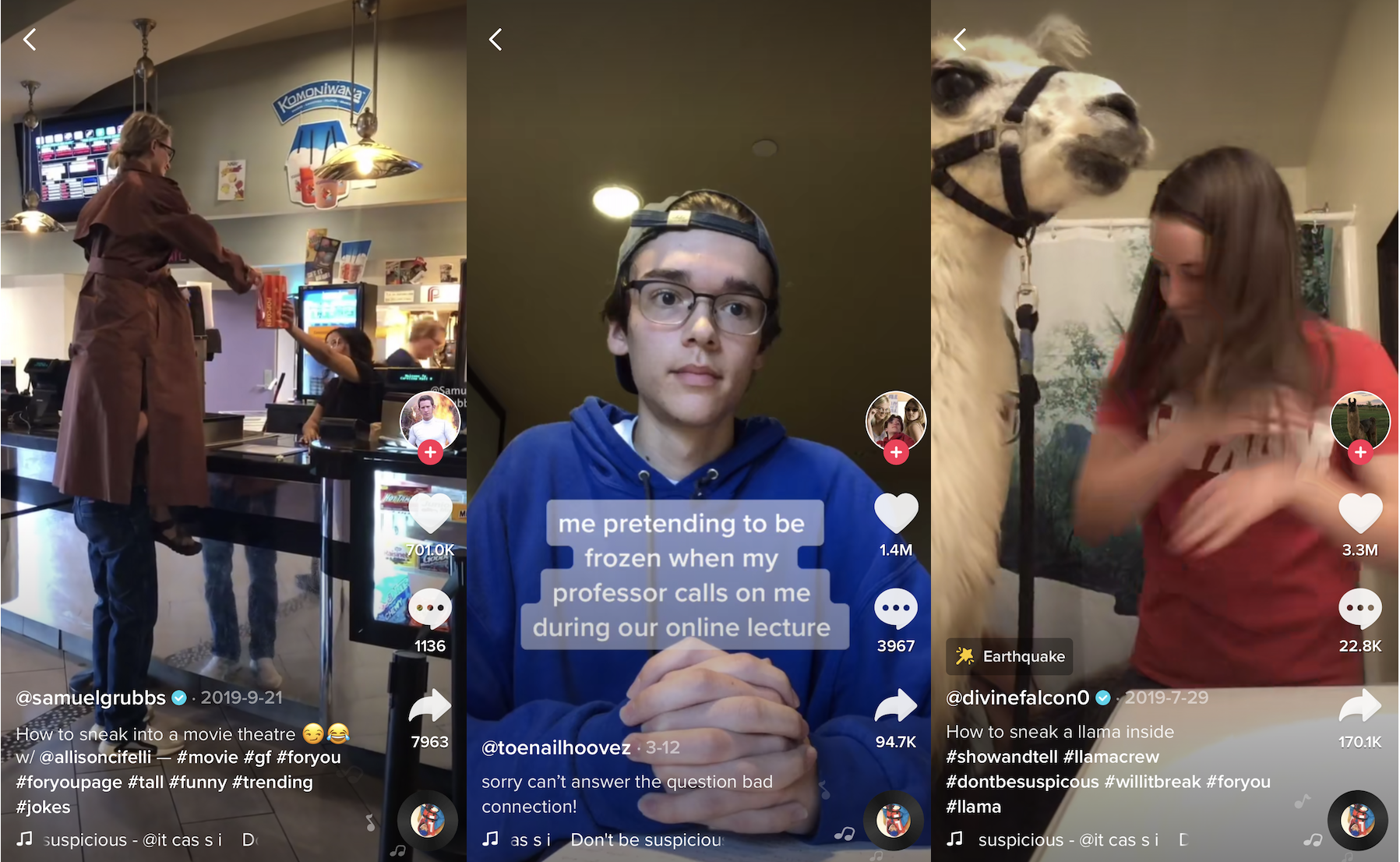Music
Trailers
DailyVideos
India
Pakistan
Afghanistan
Bangladesh
Srilanka
Nepal
Thailand
StockMarket
Business
Technology
Startup
Trending Videos
Coupons
Football
Search
Download App in Playstore
Download App
Best Collections
Technology

I didn&t see this as an enterprise-focused story at first. But a recent compromise between Amazon and Apple shows how communication can help even opposing businesses solve problems and grow value.
Amazon and Apple make a deal
Amazon this week suddenly began permitting Prime subscribers to access and purchase content from Prime using the iOS app.
To the vexation of many users, this wasn&t possible before. You had to visit Amazonsite on a computer, purchase the item you wanted, and only then could this be accessed using an iOS device, including Apple TV.
The process was annoying, and was purely driven by the two bigwig multinationals arguing over who would get to keep a share of the purchase price. And customers suffered to protect the all-important bottom line.
To read this article in full, please click here
- Details
- Category: Technology Today
Read more: Amazon and Apple TV deal shows how to solve business conflicts
Write comment (99 Comments)[Editornote: Want to get this free weekly recap of TechCrunch news that startups can use by email? Subscribe here.]
There are a few online productivity stocks booming, and a few popular remote-first product companies still announcing funding rounds amid a huge new wave of unicorn layoffs. But what about the previously white-hot software-as-a-service category overall?
Pullbacks in spending are expected in general, obviously, which means higher churn and slower growth for major SaaS companies. An informal peer survey put together by Gainsight CEO Nick Mehta indicates that many leading execs in the space expect churn to head to double digits in the near future, Alex Wilhelm learned while researching the topic this week for Extra Crunch.
But, the effects of so much of the world going remote could end up still being a bigger lift for many companies large and small. George Kurtz, CEO of publicly traded cybersecurity company Crowdstrike, expects global growth as mainstream businesses everywhere get serious about remote for the first time.
Meanwhile, fresh index data from Profitwell seems to already show a bit of a rebound in subscriptions following weeks of drops, which Alex digs into separately. Itprobably too soon to be hopeful, but anecdotally Extra Crunchown growth has gotten back to its previously strong footing in the last few weeks (thanks for the support, everyone).
He also caught up with Mary D&Onofrio, an investor with Bessemer Venture Partners about how to value a startup during a downturn. She also pointed out that many of the losses you&re seeing are relative. &We&re just reverting back to historical cloud software multiples. Historically if you look at the emerging cloud index basket, ittraded at seven times forward [revenue]. Right now we&re trading at eight times forward [revenue].& At least for many companies in the space, things are still not so bad.

The venture capital crunch continues
We&ve been writing a daily-ish series of articles about the state of startup investing in the face of COVID-19. First up, Danny Crichton breaks down &the denominator effect& on TechCrunch, where a limited partner is required through their own funding agreements to allocate a mix of equities beyond startups and rebalance based on the circumstances. When the other portions lose too much (such as, say, public stocks), LPs then have to pull back on the amount of money they can have in venture capital firms… thereby leaving those firms short of money for startups. Where is this going? &If the markets happen to rapidly recover, they might quickly reopen their investments in VC and other alternative assets,& Danny writes. &But if the markets stay sour for longer, then expect further downward gravitational pull on the VC asset class as portfolio managers reset their portfolios to where they need them. Itthe tyranny of fifth grade mathematics and a complex financial system.&
How can venture firms navigate this daunting terrain? Connie Loizos checks in for TechCrunch with Aydin Senkut of Felicis Ventures (&now is probably one of the toughest times& to get a firm launched), Charles Hudson of Precursor Ventures (find some family offices who are going to be less orthodox in general and potentially less affected) and Eva Ho of Fika Ventures (don&t get discouraged, but use the additional challenge to really reflect about this career choice).
Check out additional coverage over on Extra Crunch, including a quick survey of other investors about their approaches, an interview with a venture debt lender, and a look at the trends in funding going back to last year.

The content library is king for TikTok
Why is TikTok able to dominate the charts in the face of giant competitors? As millions sit at home using the app, Josh Constine dives into why it is likely to continue beating incumbent consumer products from companies like Alphabet and Facebook (or consumer startups). Itwhat he calls the &content network effect,& as he detailed on TechCrunch:
Facilitating remixes offers a way to lower the bar for producing user generated content. You&d don&t have to be astoundingly creative or original to make something entertaining. Each individuallife experiences inform their perspective that could let them interpret an idea in a new way. What began with someone ripping audio of two people chanting &don&t be Suspicious, don&t be suspicious& while sneaking through a graveyard in TV show Parks and Recreation led to people lip syncing it while trying to escape their infantroom without waking them up, leaving the house wearing clothes they stole from their sistercloset, trying to keep a llama as a pet, and photoshopping themselves to look taller. Unless someonealready done the work to record an audio clip, therenothing to inspire and enable others to put their spin on it.

Healthtech in the time of COVID-19
While most people reading this newsletter have probably been experiencing the worldwide remote-first switch, an equally momentous set of changes are sweeping health care as medical systems try to get a grip on the pandemic. We had just published a big survey of leading digital health investors in December, but now is the time for an update. We checked in with:
- Annie Case,Kleiner Perkins
- Kristin Baker Spohn,CRV
- Deena Shakir,Lux Capital
- Jennifer Hartt,Ben Franklin Technology Partners
- John Prendergass,Ben Franklin Technology Partners
- Bill Liao,SOSV
HereCRVSpohn, summing the situation up nicely: &COVID-19 is driving opportunities, notably the rapid adoption of telehealth/virtual care by clinicians and patients, clinical trials in the cloud, as well as renewed focus on rapid point-of-care diagnostics. With virtual care, we&re seeing a decade of acceleration happening in a matter of weeks. Up until this point, there has been high-activation energy to conduct a first &eVisit& because the alternative (in-person care) was so well-established and largely available.&
Read the full thing on Extra Crunch.
Around TechCrunch
- From Danny: On Monday, prolific enterprise seed investor Jonathan Lehr of Work-Bench will be joining us for a live conference call on TechCrunch. Work-Bench has been an investor in such notable investments as Tamr, Cockroach Labs, Backtrace, Socure, and x.ai. Danny and Alex will quiz Jon on all kinds of questions around what the seed stage looks like for enterprise startups these days, and of course, will take questions from Extra Crunch members.
- Disrupt will have a remote version this year, which we&re now beginning to sell as a Digital Pass. Check it out!
Across the week
TechCrunch
Proposed amendments to the Volcker Rule could be a lifeline for venture firms hit by market downturn=
The space in between: The stratosphere
Test and trace with Apple and Google
Want to survive the downturn? Better build a platform
Using AI responsibly to fight the coronavirus pandemic
Extra Crunch
Lending startups are angling for new business from the COVID-19 bailout
What happens to edtech when kids go back to school?
Amid shift to remote work, application performance monitoring is ITbig moment
Rebecca Minkoff has some advice for e-commerce companies right now
#EquityPod
From Alex:
How are you holding up? Are you keeping up? And most importantly, are you hydrating yourself? Thereso much news lately that we&re all falling a bit behind, but, hey, thatwhat Equity is for. So,Natasha,Danny, andAlexgot together to go over a number of the biggest stories in the worlds of private companies.
A warning before we get into the list, however. We&re going to be covering layoffs for a while. Don&t read more into that beyond a note to this unfortunate situation. We try to talk about the most important news, not what brings delight or joy to our hearts (because if that was the case, we would be all over mega-rounds). That in mind, herethis weekrundown….
Which you can find here!
- Details
- Category: Technology Today
Read more: Startups Weekly: SaaS companies feel the churn but hope for a brighter tomorrow
Write comment (90 Comments)
This sysadmin pilot fish doesn&t put much credence in the stories he hears about the IT manager at his new job — too far-fetched.
&He was known for putting the staff in impossible situations,& says fish. &He would attend planning meetings and agree to criteria that simply couldn&t be met, then tell everyone to just make it happen. Of course, the consequences were our fault as well.&
Then one day fish and his team go to the IT manager to explain the need for more file server capacity. They have the data showing current capacity, growth over time and the expected date when they&ll hit the wall.
IT manager's only response: &No.&
So the team goes looking for other options, and identifies files on users& home drives that can be removed to increase capacity without impacting the business. They bring the new proposal to the IT manager.
To read this article in full, please click here
- Details
- Category: Technology Today
Read more: Flashback Friday: Now he’s a believer
Write comment (91 Comments)Under new guidance issued by the Small Business Administration it seems non-profits and faith-based groups can apply for the Paycheck Protection Program loans designed to keep small business afloat during the COVID-19 epidemic, but most venture-backed companies are still not covered.
Late Friday night, the Treasury Department updated its rules regarding the &affiliation& of private entities to include religious organizations but keep in place the same rules that would deny most startups from receiving loans.
The NVCA and other organizations had pushed Treasury Secretary Steve Mnuchin to clarify the rules regarding startups and their potential eligibility for loans last week. And House Republican leader Kevin McCarthy even told Axios that startups would be covered under the revised regulations.
Apparently that didn&t happen, as Mark Suster, the managing partner of Los Angeles-based Upfront Ventures, noted in a tweet.
At its essence, the issue for startups seems to be centered on the board rights that venture investors have when they take an equity stake in a company. For startups with investors on the board of directors, the decision-making powers that those investors hold means the startup is affiliated with other companies that the partnerventure firm has invested in — which could mean that they&re considered an entity with more than 500 employees.
&[If] therea startup thatgoing gangbusters right now, they shouldn&t apply for a PPP loan,& wrote Doug Rand, the co-founder of Seattle-based startup Boundless Immigration, and a former Assistant Director for Entrepreneurship in the Office of Science and Technology Policy during the Obama administration, in a direct message. &But most startups are getting killed because, you know, the economy is mostly dead.&
The $2 trillion CARES Act passed by Congress and signed by President Trump was designed to help companies that are adversely affected by the economic fallout resulting from the COVID-19 outbreak in the US and their employees — whether those businesses are directly affected because their employees can&t leave home to do their jobs or indirectly, because demand for goods and services has flatlined.
While some tech startups have seen demand for their products actually rise during these quarantined days, many companies have watched as their businesses have gone from one to zero.
The sense frustration among investors across the country is palpable. As the Birmingham-based investor, Matt Hottle, wrote, &After 4 days of trying to help 7 small businesses navigate the SBA PPP program, the program went to shit on launch. I&m contemplating how many small businesses, counting on this money, are probably locked out. I feel like I/ we failed them.&
And although the rules around whether or not many startups are eligible remain unclear, itprobably wise for companies to file an application, because, as the program is currently structured, the $349 billion in loans are going to be issued on a first-come, first-served basis, as Suster flagged in his tweets on the subject.
General Catalyst is advising its companies that are also backed by SBIC investors to apply for the loans, because that trumps any other rules regarding affiliation, according to an interview with Holly Maloney Burbeck, a managing director at the firm.
And therealready concerns that the money could run out. In a tweet, the President announced that he would request more money from Congress &if the allocated money runs out.&
&Congress saw fit to allow Darden to get a forgivable small business loan—actually a taxpayer-funded grant—for like every Olive Garden in America. But Congress somehow neglected to provide comparable rescue measures for actual small businesses that have committed the sin of convincing investors that they have the potential to employ a huge number of people if they can only survive,& Rand wrote in a direct message. &The Trump administration has full authority to ride to the rescue, and they did… but only for large religious organizations.&
- Details
- Category: Technology Today

&The Platform& is not a subtle movie.
Thattrue of its approach to horror, with intense, bloody scenes that prompted plenty of screaming and pausing from your hosts at the Original Content podcast. Italso true of its thematic material — right around the time one of the characters accuses another of being communist, you&ll slap yourself on the forehead and say, &Oh, itabout capitalism.&
The new Netflix film takes place in a mysterious prison, with two prisoners on each level (they&re randomly rotated each month). Once each day, a platform laden with delicious food is lowered through the prison. If you&re on one of the top levels, you feast. If you&re further down, things are considerably more grim, and can become downright gruesome as the month wears on.
&The Platform& is a hard movie to sit through, and it has other faults, like an irritatingly mystical ending. But itcertainly memorable, and even admirable in its dedication to fully exploring both the logistical and moral dimensions of its premise.
You can listen to our review in the player below, subscribe using Apple Podcastsor find us in your podcast player of choice. If you like the show, please let us know by leaving a review on Apple. You can also send us feedback directly. (Or suggest shows and movies for us to review!)
And if you&d like to skip ahead, herehow the episode breaks down: 0:00 Intro 0:27 &The Platform& review 17:29 &The Platform& spoilers
- Details
- Category: Technology Today
Read more: Original Content podcast: ‘The Platform’ offers a gruesome metaphor for capitalism
Write comment (92 Comments)The COVID-19 pandemic rages on.
As cases in the United Statesskyrocket, one of the most foreboding possibilities of COVID-19rapid growth is the potential to overwhelm hospital capacity. Hospitals in cities like New York are already underwater, relying on hospital boats (&70,000 ton message[s] of hope and solidarity&) to keep them afloat, and on retired providers as well as prematurely graduated medical students to staff those beds.
In tandem, telehealth has rapidly evolved from a &nice to have& to a &need to have& for U.S. health systems.
Telehealth: from hype to hope to here, overnight
This timing is prescient, as the technologies for telehealth have existed for several decades (at varying levels of sophistication) with modest uptake to-date. From 2005 to 2017, only one out of every 150 doctor visits and one in every 5,000-10,000 specialist visits were conducted via telemedicine.
A major catalyst to uptake was the federal governmentannouncement two weeks ago that restrictions on the use of telehealth for Medicare would be temporarily lifted. That policy change included expanding coverage across specialties and settings; waiving co-payments; and loosening HIPAA privacy requirements (such as prohibiting ubiquitous teleconferencing technologies like AppleFaceTime).
Accordingly, telehealth—overnight(ish)—is finally mainstream.
At Americalargest health systems, adoption of telehealth has accelerated rapidly: at Massachusetts General Hospital, the weekly number of virtual appointments has multiplied 10-20 times in the past weeks, while at NYU Langone Health, staffing was increased fivefold to handle the rush of new appointments. Teladoc, the U.S.largest virtual-care provider, is now reporting over 100,000 appointments weekly.
The diversification of telehealth use cases
The proliferation of telehealth via pioneering health systems has spawned unique use cases rarely seen before in the landscape of U.S. healthcare.
These use cases cut across numerous settings: emergent care, intensive care, triage, and monitoring, to name a few. Outside the hospital setting, domestic initiatives such as HoustonProject Emergency Telehealth and Navigation (ETHAN) has provided a precedent for the use of telemedicine by paramedics and EMTs in first-response. These sorts of programs have actively been pioneered by startups such as RapidSOS in response to COVID-19.
At the gateway to the hospital (the emergency room), building on work by Jefferson Hospital in Philadelphia, health systems including Kaiser Permanente, Intermountain Health, and Providence Health have adopted programs for tele-intake to minimize contact between providers and patients under investigation (PUIs) for COVID-19.
Upon admission to the hospital, telehealth is being used for monitoring patient status while also ensuring the safety of health providers. Such technologies are proving exceptionally important given wide-scale shortages of personal protective equipment (PPE).
At Washington StateProvidence Regional Medical Center Everett (the site of the first COVID-19 case in America), programs for telemonitoring of ICU patients were built from the ground up in six weeks. Startups like EarlySense are combining multimodal sensors with audiovisual capabilities to enable remote detection and evaluation of clinical deterioration on non-intensive wards.
Following discharge from the emergency room or the inpatient units of the hospital, telescreening tools like TytoCare are enabling physicians to conduct exams and deliver care remotely that previously would have required in-person contact. In the case of discharge from the emergency room—given the volatile clinical course of COVID-19—methods for streamlined and regular check-ins are critical to monitor symptoms and guide the need for more intensive treatment.
Likewise, given recovery from the disease can potentially be tumultuous (especially after ICU care), these technologies are essential for mitigating what has been deemed the &post-hospital syndrome& and ensuring long-term health after discharge from inpatient care.
Here—but there, or everywhere?
While the near-overnight expansion of telehealth in diverse forms is positive news, barriers remain to its widespread dissemination in this country. To move from the prototyping stage at the meccas of modern medicine to a widely useful tool across healthcare settings, telehealth must seek to solve what has been deemed the &last mile problem.&
The last mile refers to the non-technological, practical elements of local care delivery. As with telehealth, when these practical elements of care delivery are inadequately addressed, they inhibit providers from implementing new technologies for patients. In the case of telehealth, the last mile can be grouped into four domains: those related to (a) coverage and reimbursement (b) legal concerns (c) clinical care and (d) social challenges. The federal governmentpolicy change this month took major steps forward to resolve some legal concerns, including limitation of tort liability and allowing common teleconferencing platforms that may not be strictly HIPAA compliant.
However, considerable obstacles to the uptake of telehealth persist across the other three domains, especially for the 86.5% of Americans not on Medicare. To effectively combat COVID-19, telehealth must also reach these 281 million individuals in the under-resourced nooks and crannies of the U.S. As the virus becomes more pervasive across the country, rural health systems are depending heavily on these technologies to manage the imminent surge of cases.
The essentials to expanding telehealth
In terms of coverage for patients, only 36 states mandated coverage of telehealth services in insurance plans as of April 2019. For those with mandatory coverage, out-of-pocket copays typicallyranged $50-80 per appointment. Alternatively, certain plans waived copays, but only following an annual fee for premium services—premiums which may well rise going forward.
All of these costs will hinder the use of telehealth in non-Medicare patients amidst the present outbreak.
While in the past two weeks, some private insurers such as United Healthcare (covering 45 million Americans), Humana (39 million), and Aetna (13 million)waived copays on telehealth services, the privates covering the remaining hundreds of millions of Americans must follow quickly. States can help accelerate this by following the lead of Massachusetts, which last month required all insurers to cover telehealth.
In terms of reimbursement to providers, only 20% of states required payment parity for telehealth to ensure—if telehealth was covered at all—it is remunerated at rates approximating in-person visits for similar diagnoses. This disparity has made adoption of telehealth undesirable and/or untenable for health systems, since the reimbursement rates for telehealth average 20-50% lower than for comparable in-person service.
The challenges to adoption of telehealth are further heightened for independent practices, who must pay subscription fees to use standard telehealth platforms, but simultaneouslyexperience revenue decreases of some 30% upon integrating telehealth. To make adoption of telehealth financially feasible for health systems and individual practices amidst the COVID-19 outbreak, states once again should follow Massachusetts in seizing the opportunity to enforce payment parity by private insurers.
Finally, in terms of clinical care, issues abound in the minutia of how and where telehealth can be performed. In terms of how telehealth is performed: while these services should integrate with the existing workflows of clinical practice, insurance rules currently hinder this. For example, e-visits and check-ups are only permitted for &existing& patients rather than for new patients presenting with mild symptoms or fleeting concerns, who may not require a full work-up (this is the case even under the recent CMS policy).
Moreover, asynchronous methods such as &store-and-forward& consultations and remote patient monitoring—exactly the sort of efficient and highly-scalable pathways integral to the flexible provision of care to the dispersed masses—are restricted in most states.
Additionally, where telehealth can be conducted is hamstrung by &origination site& policies banning these services in patient homes but for a select few conditions (such as stroke assessment and opiate rehabilitation). Such arbitrary, excessive regulations make the widespread utilization of telehealth unrealistic. Also, state-by-state licensing requirements prevent physicians from providing care across borders (for reasons rooted in nineteenth-century concerns of medical quality gaps between states).
To promote the care of COVID-19 patients in epicenter regions, states should follow the lead of New York and Florida to suspend out-of-state licensing bans, allow license transferability, or at least expedite licensing through &licensure compacts& in allied states.
Finally, in terms of social challenges, considerable access disparities exist between demographic groups. For example, according to the National Telecommunications and Information Administration2018 survey, vulnerable populations such as the elderly were 21% less likely to have internet access and almost 50% less likely to conduct videocalls; the poor were 34% less likely to communicate with doctors online; and other demographic minorities (such as Hispanic ethnicity or lower educational attainment) were also less likely to have access to and/or use telehealth technologies.
Since these populations are more likely to face the sorts of comorbid conditions and social determinants of health that heighten mortality from COVID-19—and less likely to have levels of health literacy allowing them to reduce their risk of transmitting infectious diseases like coronavirus—inequalities in telehealth access bear important implications on the countryability to flatten the curve of COVID-19.
One of the single best interventions to augment access for these individuals is expanding the scope of practice of non-physician health providers. These providers have their wings clipped by arcane laws fiercely defended by state medical associations that require their &supervision& by physicians for most cases of patient care. This is despite analyses since the 1980s exhibiting the capability for non-physician healthcare providers (such as nurse practitioners and physician assistants) to provide services as high quality as those of physicians.
Liberating various allied health practitioners (including also registered nurses, pharmacists, dentists, paramedics, and social workers) to screen, diagnose, treat, and prescribe with increased autonomy would undergirdtelehealthcapabilities as a &force multiplier& in the setting of COVID-19. They can also unleash the potential of startups such as The MAVEN Project which provide platforms for peer-to-peer consults between specialty and generalist health providers in emergency settings.
In geographically dispersed states such as California—where allied health providers are expected to provide half of all primary care appointments by 2030—these policies are especially vital. Bills designed to facilitate these programs like the California Assembly Bill 890 that remains stalled should be endorsed to protect patients across the state from the insidious diffusion of COVID-19.
In summary, the early responses by federal and state agencies to COVID-19 have made progress to promote the uptake of telehealth. However, as the virus expands its siege across the country, more comprehensive solutions are urgently needed to equip the creators, users, and beneficiaries of telehealth with the arsenal they desperately require to vanquish this invisible enemy. Accordingly, pen-and-paper may be the most important technologies for bolstering telehealth today. Letters to senators, in the near-term, may be the most potent ammunition we&ve got.
- Details
- Category: Technology Today
Read more: Why telehealth can’t significantly flatten the coronavirus curve—yet
Write comment (95 Comments)Page 1043 of 1420

 17
17





